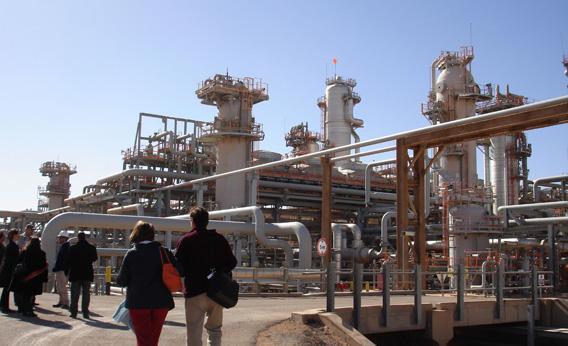In the annals of corporate greenwashing, the effort to rehabilitate coal’s sooty image is one of the most audacious. This cheap, plentiful fossil fuel is responsible for fouling our air and overheating the planet. And yet it’s the subject of a long-running campaign promising “clean coal.”
Everybody snickers at that term. Chris Rock recently joked on Twitter that “clean coal is kinda like clean porn.” Several years ago, a Washington Post op-ed scoffed: “Never was there an oxymoron more insidious, or more dangerous to our public health.”
So before we go any further, let’s be clear: The notion of clean coal gets no respect. You know it, I know it, we all know it.
Now here’s the really crazy part: There might one day (in the not-too-distant future) be such a thing as clean coal. For real.
And make no mistake, that would be a good thing, for “coal isn’t disappearing anytime soon,” as Lisa Palmer pointed out earlier this month in Slate. A new study just released by the World Resources Institute reveals that nearly 1,200 new coal plants have been proposed worldwide, most of them in developing countries such as China and India. The implications of this are dire, Time magazine’s Bryan Walsh writes: “Since coal is already the single biggest contributor to man-made global warming, an unchecked global coal-building spree really would be game over for the climate.”
So the race to a clean-coal future is on, with the Holy Grail being a technology known as carbon capture and storage (CCS). The basic idea of CCS is to bottle carbon dioxide from power plants before it is released into the atmosphere and then bury it somewhere safely underground. The good news is that the technology to do this actually exists. It is the focus of ongoing government-sponsored research. Since 2005, $10 billion from federal coffers has poured into dozens of pilot projects around the country, the majority of them at universities and national labs. In Texas, one state-of-the-art commercial plant that would capture 90 percent of its CO2 emissions is well into the planning stages. Its progress is being watched closely by industry and greens (who support it). While the idea of clean coal may be derided, proof of concept has been demonstrated.
The bad news: Carbon sequestration (another wonky term commonly used to describe CCS) is prohibitively expensive. Capturing and compressing coal exhaust perversely requires a lot more energy, which is costly. This, plus lingering technical concerns, make scaling up the technology difficult. The World Resources Institute, which favors implementation of CCS, notes the quandary: “In technology development there is a period referred to as the ‘valley of death,’ where a technology has been proven in the laboratory and on a small scale, but has yet to become commercially viable.”
The promise of clean coal thus tantalizes us. We look for it it on the horizon, but for now it remains trapped in the “valley of death.” What would free it?
Well, let’s first acknowledge that the forecast for clean coal is looking grim at the moment. Over the summer, the Congressional Budget Office (CBO) issued a report that cast doubt on CCS becoming economically viable in the absence of any federal measures that give utilities an incentive to implement the technology. To encourage CCS, the two big policy levers are restricting emissions outright and setting a price on carbon that makes it more expensive to emit than to trap. The Congressional cap-and-trade bill that died in 2010 would have helped accomplish this goal. So would a carbon tax, an idea that floated around Washington in the days after President Obama’s re-election. But the White House itself punctured that trial balloon.
Where does that leave the future of clean coal? Most likely dependent on technological breakthroughs that reduce its cost. Some think that is more likely to happen in China than in the United States. Ironically, the big innovation that led to the shale gas boom—which is now fueling an industrial rebirth in the United States—also reduced the incentive to decarbonize coal. The flood of cheap natural gas in recent years has knocked king coal off its U.S. throne. Why invest in a pricey new technology to improve your product if utilities don’t want you anymore?
But the huge role that coal plays (and will continue to play) in developing countries like China cannot be wished away. So the dream of carbonless coal must live. As David Hawkins, director of climate programs at the Natural Resources Defense Council (NRDC) told Yale Environment 360 earlier this year: “If no other country in the world existed other than China, it would warrant the development of CCS.”
In a perfect world, coal would go the way of whale oil. Like coal, whale oil was a leading energy source for hundreds of years. Whaling caused a massive environmental catastrophe—the world’s whale populations still haven’t recovered—and went through a boom-and-bust phase as whales, like rich and accessible coal seams, became harder to find. Like mining, whaling was often a deadly business.
In a perfect world, the fossil-fuel lobby wouldn’t reduce the idea of “clean coal” into an empty PR slogan and use it for political purposes. Yes, it’s easy to be suspicious about efforts to sanitize the image of a dirty energy. But the actual world we live in requires us to look past the cynical marketing campaign that everyone mocks and accept the fact that the planet’s climate needs clean coal—and the sooner, the better.
